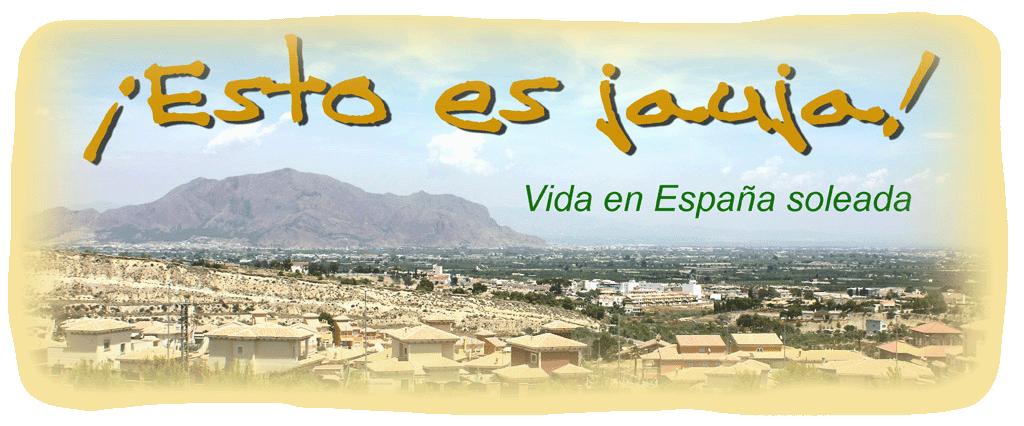When we lived on the Wirral, Pam and I rarely went down to the beach - even on those odd days when the weather was good. Now we live on the Costa Blanca, it is the same. Within 20 minutes or so, we have some of the finest beaches that you would ever want to lay a towel on but we seldom visit them.
In August we have good reason. During this month, it seems that the whole of Spain, along with several other northern European countries descends on the coastal towns for their annual summer holidays. Parking near a beach becomes near impossible and when you eventually find somewhere to leave your car, it is a long trail to claim an area of sand much larger than your sun umbrella. It hardly seems worth it so we choose to stay by our pool instead.
For those summer visitors from Madrid, there is a ritual to be followed. Each morning, at dawn, the men take their brollies and chairs down to the beach and claim a place as near to the sea as possible in spite of the city ordinance designed to prevent people from reserving places. By 9am each day, the most popular beaches are covered with unmanned umbrellas in preparation for the day to come.
By 11am the families arrive with their cool boxes, beach bags and children in tow to take up the spots that the men have so carefully reserved. Any late arrivals have to either cheekily pitch themselves between the regulars or put up with a longish walk through a sea of umbrellas to bathe. Suffice it to say, if you go to the beach at Torrevieja during August, it pays to have a distinctive sun shade or you may never find your way back to your family.
At lunchtime, the exodus to the beach repeats itself in reverse. Some leave their “campsites” and retire to a restaurant for lunch, others pack up completely and return to their apartments to prepare lunch there. Following lunch they all take a siesta, either under the shade of their brolly or back in their apartments. By about 4pm, some of those who left will return for an late afternoon session on the beach. For a large number though, their day on the beach is over and the ritual will not be repeated until the next morning.
For the physically disabled, the beach would be a no no but for the kind services of the Red Cross. Each day they visit the homes of those who call for them, take them down to a specially adapted part of the shore to bathe and when they have finished, take them home again.
Next weekend there will be a grand exodus as the holiday makers return home crowding out the roads between here and Madrid. By the end of the first weekend of September, locals will be able to claim their beaches back. Peace will be restored until next year when the ritual will start all over again.
You might ask, why do Spaniards travel from Madrid to the Costa Blanca when they could equally holiday on the more fashionable Costa del Sol or Almeria. For one thing it is a shorter journey to the Costa Blanca and even shorter to the coast north of Valencia but more importantly, the cost of an apartment in Torrevieja is much cheaper. In fact, during the 80s and 90s apartments in Torrevieja were so cheap that many from Bigastro bought them just too spend a few weeks during the summer on the coast. At that time, a smart three bedroom apartment, close to the beach, cost less than a beach hut on the south coast of Britain. No wonder so many bought a second home near the sea.
During the boom years prices rose steeply making the proposition of a holiday home much less viable. Since then, prices have plummeted but unfortunately mortgages are no longer available and in any case many are concerned about the security of their employment.

No comments:
Post a Comment